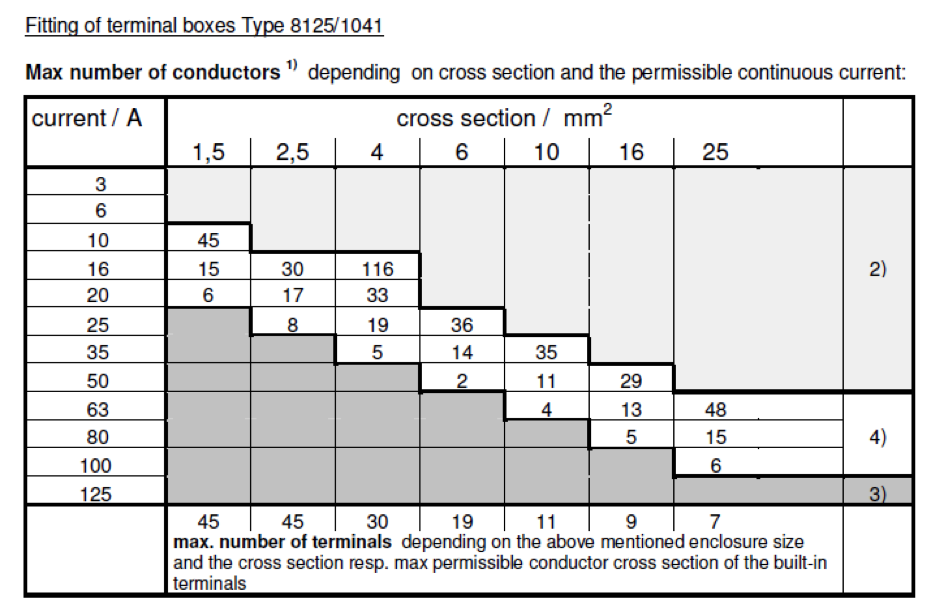Fascination About Roar Solutions
Fascination About Roar Solutions
Blog Article
The smart Trick of Roar Solutions That Nobody is Talking About
In such an atmosphere a fire or surge is feasible when three basic conditions are satisfied. This is often referred to as the "unsafe location" or "burning" triangle. In order to secure setups from a possible surge a technique of analysing and classifying a possibly harmful area is called for. The purpose of this is to guarantee the appropriate choice and installment of devices to ultimately avoid an explosion and to make sure security of life.

(https://au.enrollbusiness.com/BusinessProfile/7095102/ROAR%20Solutions)
No devices must be mounted where the surface area temperature level of the equipment is more than the ignition temperature of the provided danger. Below are some usual dirt hazardous and their minimal ignition temperature. Coal Dirt 380C 225C Polythene 420C (thaws) Methyl Cellulose 420C 320C Starch 460C 435C Flour 490C 340C Sugar 490C 460C Grain Dust 510C 300C Phenolic Material 530C > 450C Aluminium 590C > 450C PVC 700C > 450C Residue 810C 570C The probability of the danger existing in a focus high sufficient to cause an ignition will differ from area to area.
Harmful location electric equipment possibly designed for use in greater ambient temperatures. Area Repair Service By Authorised Worker: Complex testing may not be required nonetheless specific treatments might need to be followed in order for the equipment to keep its 3rd celebration ranking. Each item of tools with a hazardous score need to be reviewed separately.
The Single Strategy To Use For Roar Solutions
The equipment register is an extensive data source of devices documents that includes a minimum collection of areas to recognize each thing's place, technical specifications, Ex-spouse classification, age, and ecological information. This information is crucial for monitoring and managing the equipment efficiently within harmful locations. In contrast, for periodic or RBI sampling assessments, the grade will be a mix of Detailed and Close examinations. The ratio of Detailed to Shut inspections will be figured out by the Equipment Risk, which is analyzed based on ignition danger (the probability of a source of ignition versus the likelihood of a combustible atmosphere )and the dangerous location classification
( Area 0, 1, or 2). This variant will additionally affect the resourcing requirements for work prep work. As soon as Whole lots are specified, you can develop sampling plans based upon the example dimension of each Whole lot, which refers to the number of random devices products to be inspected. To determine the needed sample size, two elements need to be examined: the dimension of the Great deal and the category of inspection, which shows the level of effort that ought to be used( reduced, normal, or boosted )to the assessment of the Whole lot. By combining the classification of assessment with the Great deal dimension, you can after that develop the ideal denial requirements for an example, meaning the permitted number of faulty items found within that sample. For even more details on this process, please refer to the Energy Institute Guidelines. The IEC 60079 conventional advises that the maximum interval between inspections ought to not exceed 3 years. EEHA assessments will also be conducted outside of RBI projects as part of arranged maintenance and devices overhauls or fixings. These assessments can be credited towards the RBI sample sizes within the impacted Great deals. EEHA assessments are performed to determine faults in electric tools. A weighted scoring system is essential, as a solitary tool might have several mistakes, each with varying levels of ignition risk. If the mixed score of both evaluations is less than two times the fault score, the Lot is deemed appropriate. If the Lot is still taken into consideration undesirable, it has to go through a complete examination or justification, which may trigger stricter examination procedures. Accepted Whole lot: The sources of any mistakes are identified. If an usual failure mode is found, extra equipment might require maintenance. Faults are classified by intensity( Safety and security, Stability, Home cleaning ), making sure that urgent problems are evaluated and resolved without delay to alleviate any kind of effect on safety and security or operations. The EEHA database ought to track and tape-record the lifecycle of mistakes in addition to the corrective actions taken. Executing a durable Risk-Based Inspection( RBI )strategy is essential for making certain conformity and security in handling Electric Tools in Hazardous Areas( EEHA) (hazardous area electrical course). Automated Mistake Rating and Lifecycle Administration: Easily handle mistakes and track their lifecycle to enhance inspection precision. The intro of this support for risk-based inspection further strengthens Inspectivity's setting as a best-in-class option for governing compliance, as well as for any asset-centric inspection use situation. If you are interested in discovering more, we welcome you to request a demo and uncover just how our remedy can change your EEHA monitoring processes.
Rumored Buzz on Roar Solutions

In terms of explosive threat, a dangerous location is a setting in which an explosive atmosphere exists (or might be expected to be existing) in quantities that call for unique preventative measures for the building, installation and use devices. high voltage courses. In this post we check out the challenges encountered in the workplace, the threat control measures, and the called for competencies to work securely
It is an effect of modern life that we produce, save or handle a series of gases or liquids that are considered combustible, and a variety of dirts that are deemed flammable. These substances can, in particular conditions, develop eruptive environments and these can have significant and tragic effects. The majority of us recognize with the fire triangle eliminate any kind of one of the 3 aspects and the fire can not happen, yet what does see this site this mean in the context of hazardous locations? When breaking this down right into its easiest terms it is essentially: a combination of a certain amount of release or leak of a particular compound or product, blending with ambient oxygen, and the visibility of a source of ignition.
In the majority of circumstances, we can do little concerning the levels of oxygen airborne, however we can have significant impact on resources of ignition, as an example electric tools. Unsafe locations are recorded on the unsafe area category illustration and are identified on-site by the triangular "EX-SPOUSE" indicator. Below, amongst various other key information, zones are divided into three types depending on the hazard, the possibility and period that an eruptive atmosphere will exist; Zone 0 or 20 is considered the most harmful and Area 2 or 22 is regarded the least.
Report this page